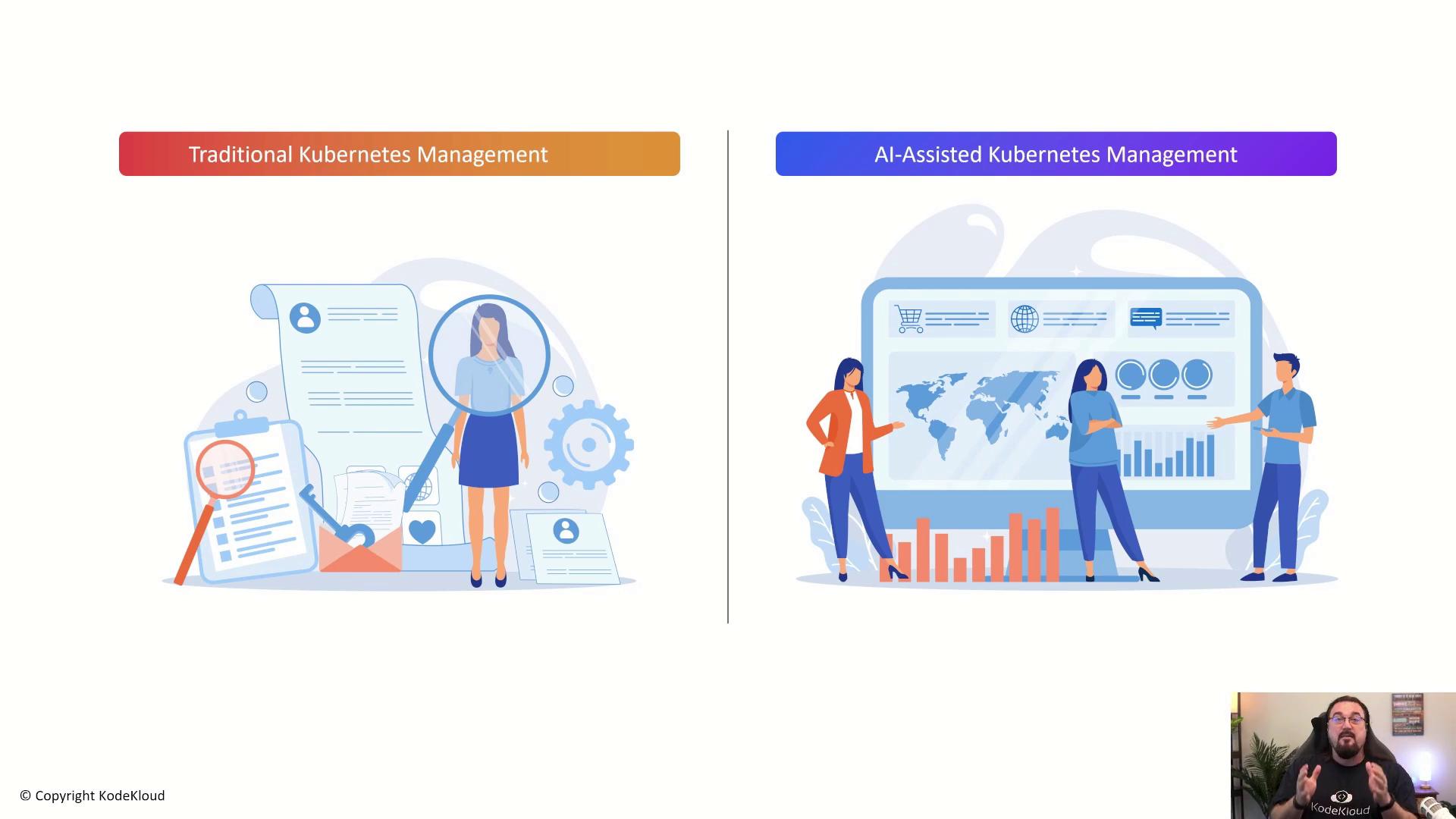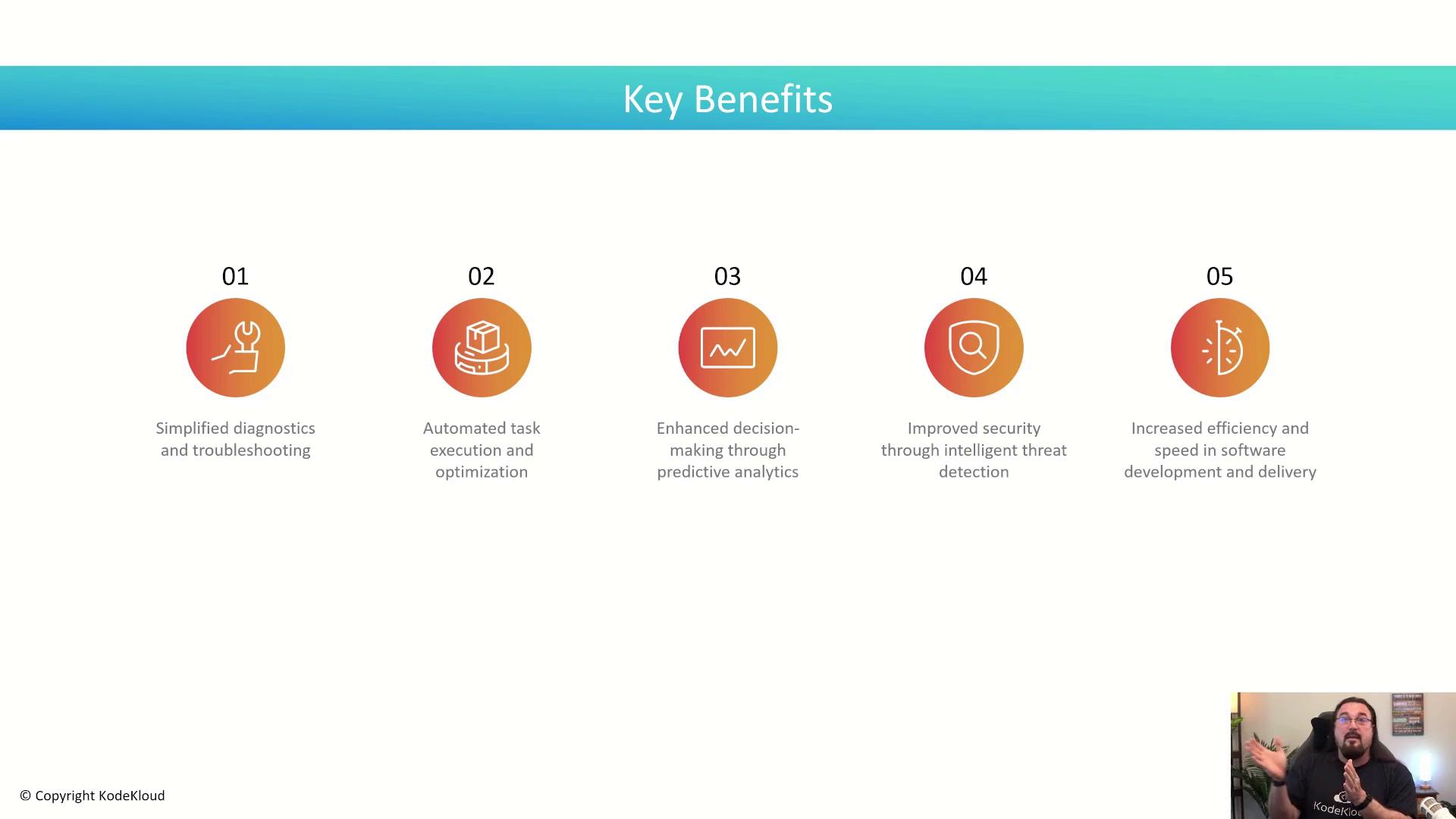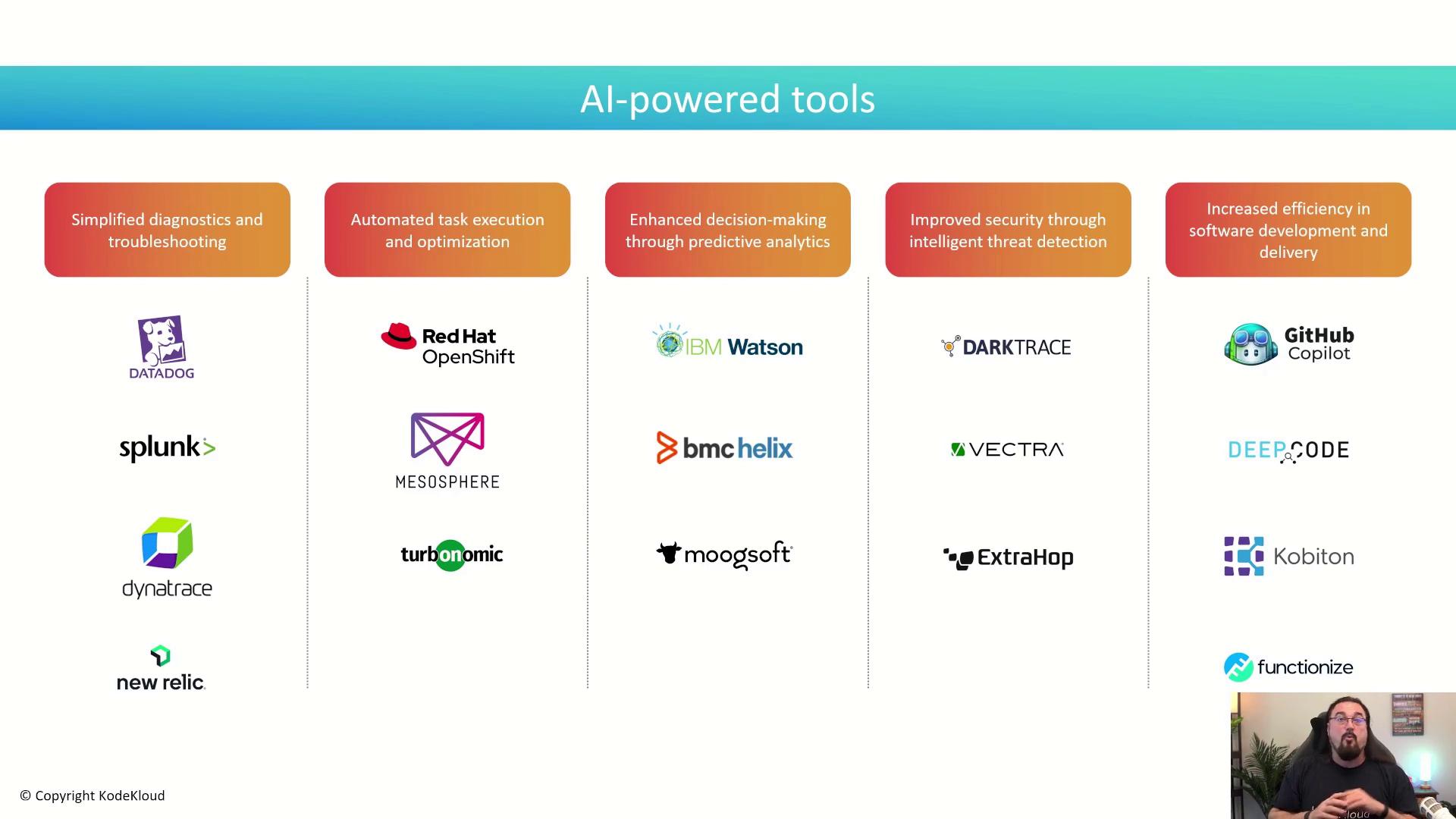Introduction to K8sGPT and AI-Driven Kubernetes Engineering
The AI Revolution in Kubernetes and DevOps
Traditional vs AI Assisted Kubernetes Management
In this lesson, we compare how Kubernetes administration has evolved from manual CLI and dashboard operations to advanced, AI-driven workflows. Instead of running kubectl scale commands yourself, you might soon say, “Scale application A in cluster B to 50 replicas,” and let an AI agent handle the details.
Traditional Kubernetes Management
Kubernetes operators have long relied on:
- CLI Tools & YAML Manifests
Manually writing and applying.yamlfiles or usingkubectlcommands. - Dashboards & Web Consoles
Monitoring resource usage and making configuration changes through UI panels. - Scripts & Alerts
Automating basic tasks via Bash or Python scripts, plus alerting via Prometheus, Grafana, etc.
While effective, these methods demand constant human oversight to balance reliability, security, and cost. Every change and incident response remains on the operator’s shoulders.
AI-Assisted Kubernetes Management
AI-driven management agents learn your high-level goals—uptime, performance SLAs, security standards, and budget caps—and translate them into actions. For each cluster tier (stateless, stateful, ML workloads), an AI agent:
- Observes real-time logs, metrics, and events
- Applies policy-based scaling, updates, and backups
- Executes self-healing routines on failures
- Frees teams to focus on architecture and strategy

Agent Responsibilities
- Continuous telemetry analysis (logs, metrics, traces)
- Automated scaling, upgrades, and cleanup jobs
- Proactive debugging and remediation
- Policy enforcement for security and compliance
Key Benefits of AI-Driven Kubernetes
| Benefit | Description |
|---|---|
| Simplified Diagnostics | AI parses large volumes of telemetry faster than manual investigation. |
| Autonomous Task Execution | Agents run routine operations—scaling, rolling updates, and housekeeping—without human input. |
| Predictive Decision-Making | Machine-learning models detect anomalies and forecast capacity or failure risks. |
| Enhanced Security Posture | Continuous vulnerability scanning and threat detection to prevent attacks. |
| Faster Delivery Pipelines | AI-powered CI/CD integrates canary, blue/green, and A/B rollouts for safer, quicker releases. |

Note
AI agents should be regularly audited to ensure they align with evolving security policies and compliance requirements.
The AI-Driven Ecosystem in 2024
By mid-2024, AI capabilities have permeated every layer of cloud and infrastructure tooling:
- Automated orchestration for VMs, containers, and serverless
- Predictive performance and capacity analytics
- Intelligent threat hunting and adaptive security hardening
- AI-augmented code generation, testing, and deployment workflows

As these AI agents mature, Kubernetes shifts from reactive firefighting to a proactive, self-optimizing platform—delivering unmatched reliability, security, and operational efficiency.
References
Watch Video
Watch video content